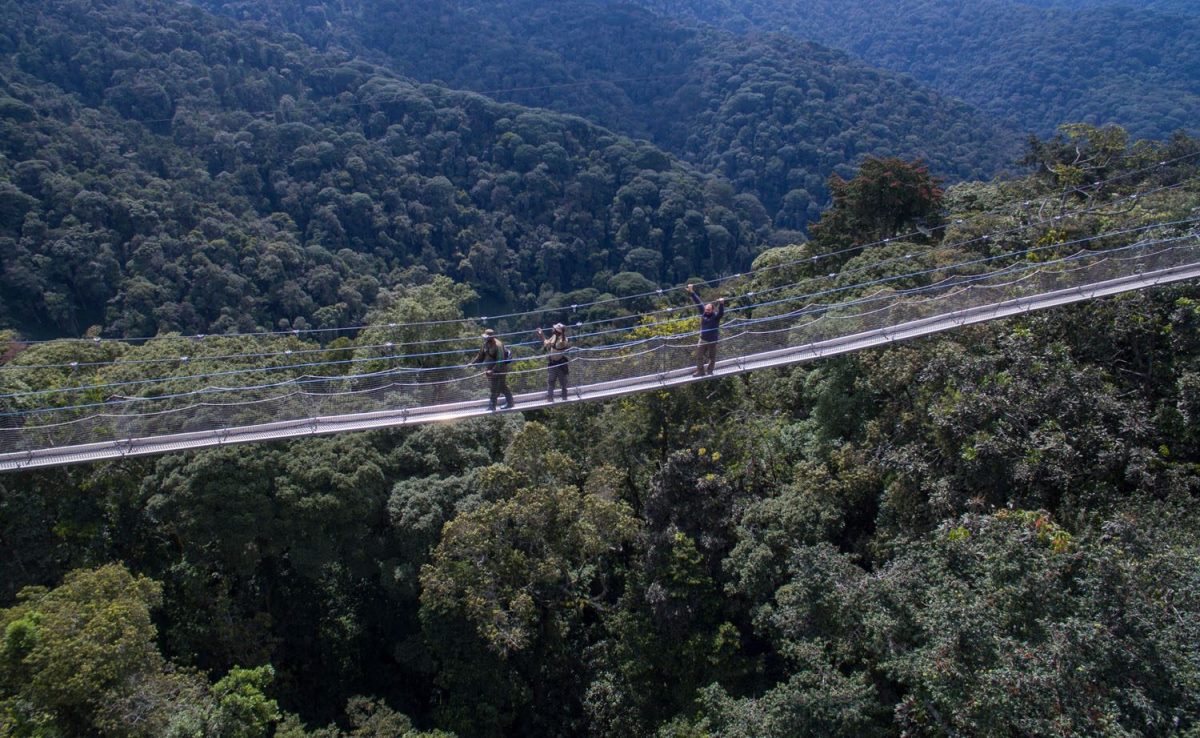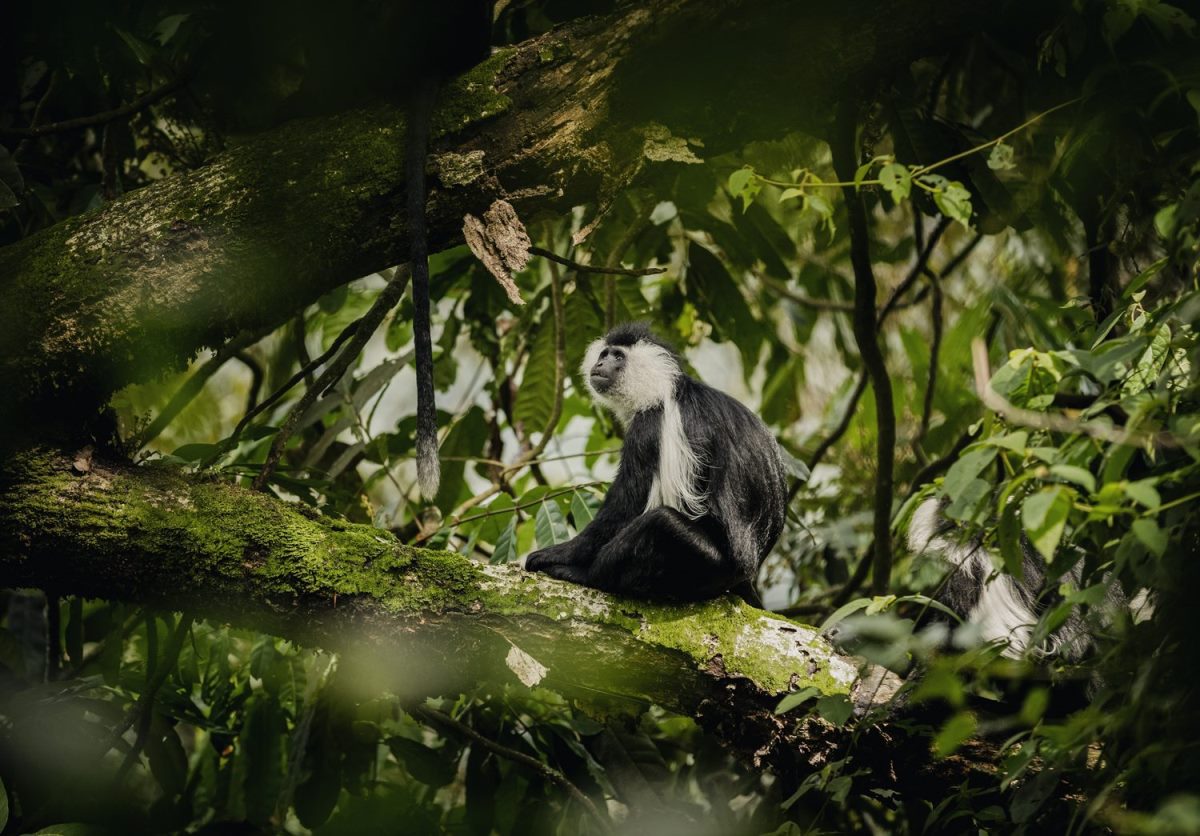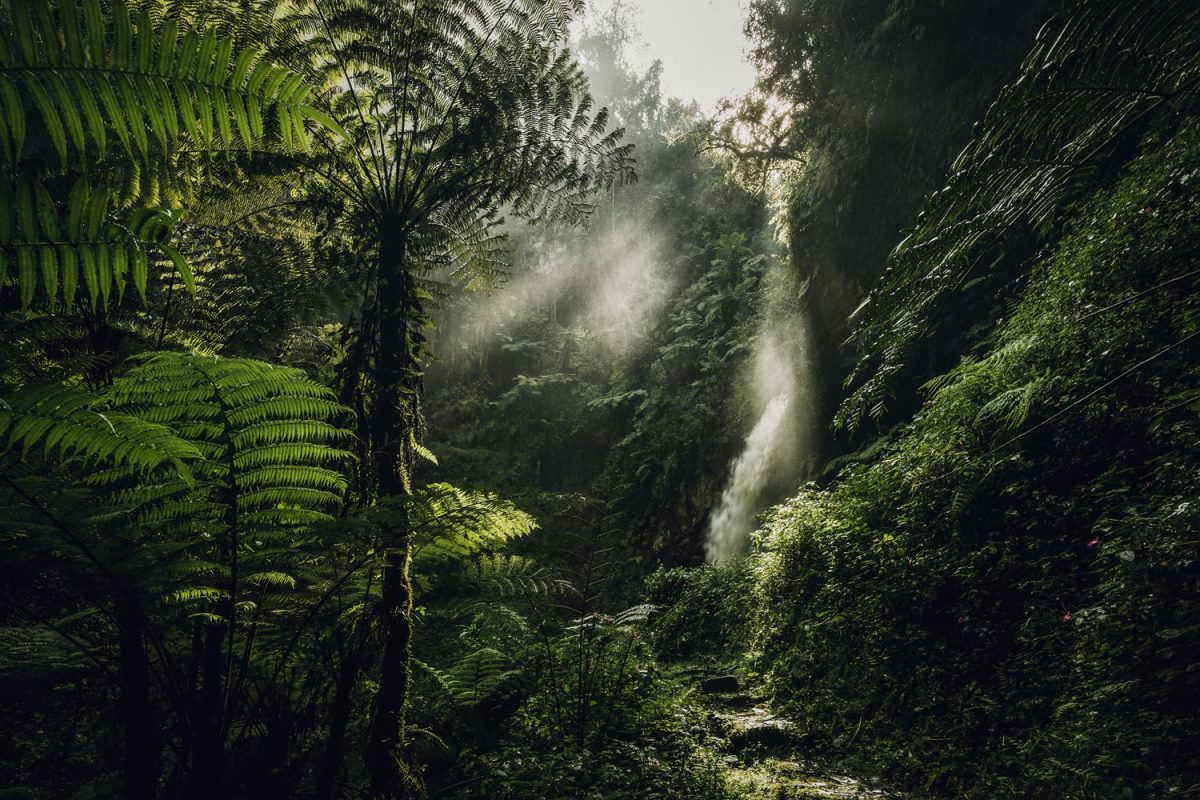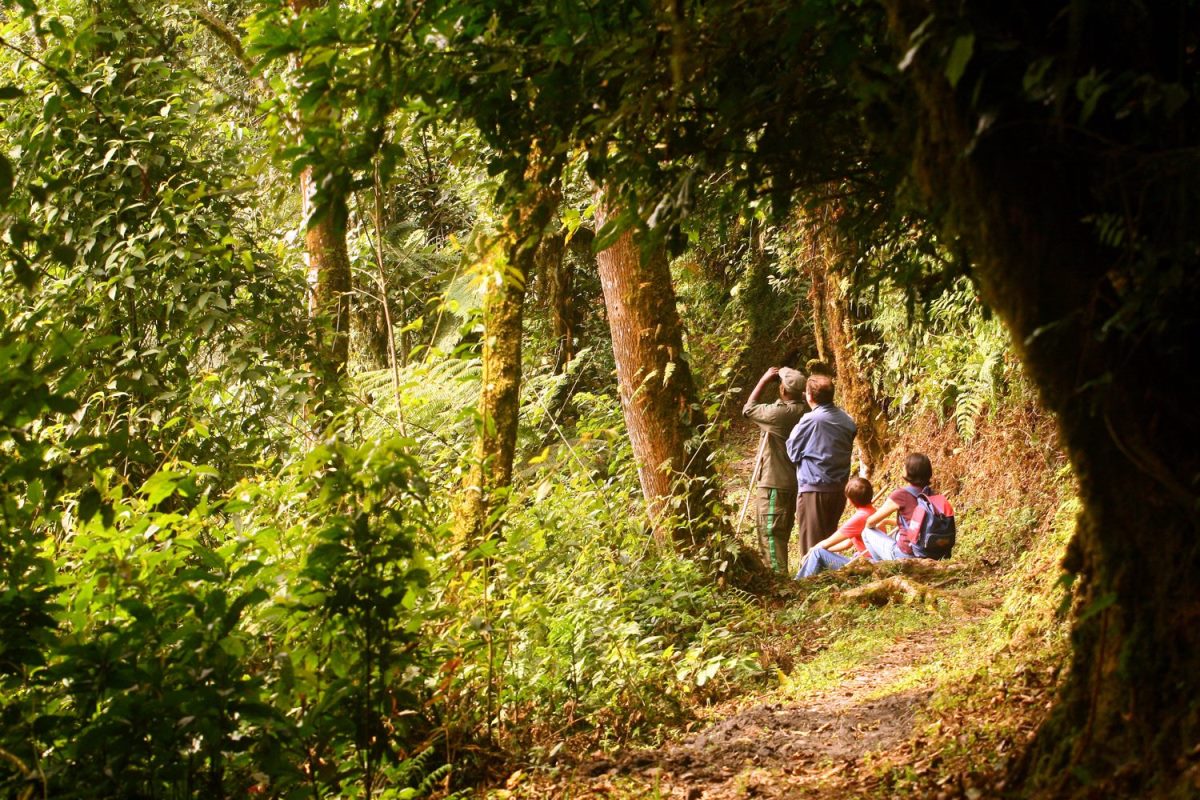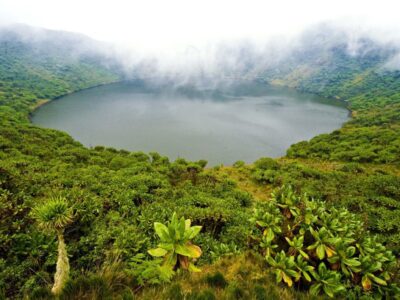Nyungwe National Park | National Parks Rwanda
NYUNGWE NATIONAL PARK TRAVEL GUIDE, RWANDA
One of Africa's oldest rainforests, Nyungwe is rich in biodiversity and spectacularly beautiful. A quarter of all of Africa's primates, 13 species, are found here, including the common chimpanzee. This park is also a birder's paradise with around 300 recorded species, nearly 30 of which are endemic to the Albertine Rift region with several plant species such as orchids.
In 2021, 1,277 hectares of indigenous forest regeneration was assisted through the removal of exotic plants. With plenty of rainfall, Nyungwe is also the major catchment area in Rwanda, and supplies water to 70% of the country
A ridge running through the forest forms a watershed between the drainage systems of the Nile and the Congo. A spring on the slopes of Mt Bigugu is said to be the furthest source of the Nile, the world's longest river
Location Of The Nyungwe National Park, Rwanda
Nyungwe National Park is located in the southwestern part of Rwanda, nestled in the Albertine Rift, a branch of the East African Rift. This park is one of the largest and oldest montane rainforests in Africa, covering an area of approximately 1,019 square kilometers (393 square miles).
Southwest Rwanda:
- Nyungwe National Park is situated in the southwest of Rwanda, bordering Burundi to the south. The park is part of the larger Nyungwe Forest, which extends into the neighboring country.
Proximity to Major Cities:
- The nearest major town to Nyungwe National Park is Cyangugu (also known as Rusizi), located about 54 kilometers (34 miles) to the west. The park is approximately a 5-hour drive from Kigali, the capital city of Rwanda, covering a distance of about 240 kilometers (149 miles) on well-maintained roads.
Major Features of Nyungwe National Park, Rwanda
Montane Rainforest:
- Nyungwe is renowned for its dense montane rainforest, which is one of the best-preserved in Central Africa. The park's diverse ecosystems include bamboo forests, grasslands, swamps, and bogs.
Biodiversity:
- The park is home to a rich variety of flora and fauna, including over 1,100 plant species, 345 bird species, and 85 mammal species. Notable wildlife includes chimpanzees, Ruwenzori black-and-white colobus monkeys, and L'Hoest's monkeys.
Water Sources:
- Nyungwe Forest is a critical water catchment area, feeding two of the world's largest rivers, the Congo and the Nile. The park provides a significant portion of Rwanda's fresh water.
Nyungwe National Park’s Accessibility
Road Access:
- The park is accessible by road from Kigali, with the journey offering scenic views of Rwanda's rolling hills and lush landscapes. The drive to Nyungwe is on a smooth tarmac road, making it a comfortable trip for visitors.
Nearby Attractions:
- Nyungwe National Park is located near other notable attractions, such as Lake Kivu and the Democratic Republic of the Congo to the west. The park's location makes it an ideal destination for those looking to explore the natural beauty and biodiversity of the region.
Nyungwe National Park's strategic location in the Albertine Rift, its rich biodiversity, and its well-preserved montane rainforest make it a unique and valuable destination for nature enthusiasts and researchers alike. The park's accessibility from major cities and its proximity to other attractions further enhance its appeal as a must-visit destination in Rwanda.
History of Nyungwe National Park, Rwanda
Nyungwe National Park, located in southwestern Rwanda, is one of Africa's oldest and most biodiverse rainforests. Here’s a detailed summary of its history:
Early History of Nyungwe National Park, Rwanda
Nyungwe Forest has been a significant natural habitat for thousands of years. The forest is believed to be one of Africa's oldest, dating back to the last Ice Age. Human presence in the area dates back at least 50,000 years, with evidence of early hunter-gatherer communities.
Nyungwe National Park during the colonial era
1903: The German colonial government declared Nyungwe a forest reserve, marking the beginning of formal protection efforts. This status was maintained by the Belgian colonial administration after World War I.
1933: Nyungwe was officially established as a reserve, further solidifying its protected status. Despite these efforts, the forest faced threats from logging, hunting, and agricultural expansion.
Nyungwe National Park during the post-colonial period
1960s-1970s: During this period, Nyungwe Forest continued to face challenges, including deforestation and poaching. The forest's biodiversity began to decline, with species such as forest elephants and buffalo becoming extinct in the area.
1980s: The Wildlife Conservation Society (WCS) and the Rwandan government conducted surveys and documented significant wildlife populations, including large groups of colobus monkeys.
Nyungwe National Park Designation
2004: Nyungwe was officially designated as a national park by the Rwandan government. This move aimed to enhance conservation efforts and promote ecotourism. The park's status as a national park helped attract international attention and funding for conservation projects.
Recent Developments at Nyungwe National Park, Rwanda
2005: The park's infrastructure was improved, with the construction of hiking trails and the famous canopy walkway, which offers visitors a unique perspective of the forest.
2010s: Nyungwe National Park became a key destination for ecotourism in Rwanda, attracting visitors interested in its rich biodiversity, including primates, birds, and plant species. The park also played a crucial role in local community development, with a portion of tourism revenue being allocated to surrounding communities.
Conservation Efforts at Nyungwe National Park, Rwanda
Nyungwe National Park is a priority for conservation due to its rich biodiversity. The park is home to over 1,100 plant species, 345 bird species, and 85 mammal species, including 13 primate species. Conservation efforts focus on protecting these species and their habitats, as well as promoting sustainable tourism practices.
Nyungwe National Park's history is a testament to the importance of conservation and sustainable tourism. From its early days as a forest reserve to its current status as a national park, Nyungwe has faced numerous challenges but continues to thrive as a vital natural habitat and a key destination for ecotourism in Rwanda.

